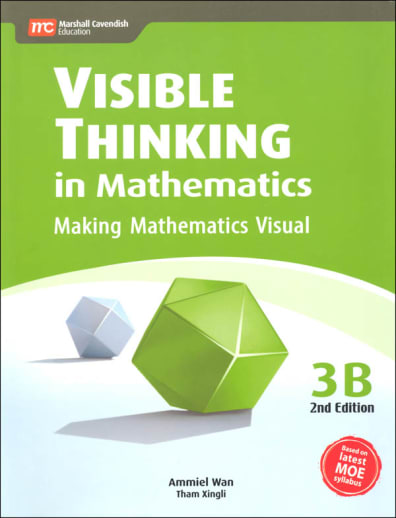What is visible thinking? In this case, to think visibly means that you can easily see or visualize something in your head. This skill, of course, is vital to the study of mathematics - you must be able to make the leap from pictorial representations to abstract ideas. Sometimes, this leap is difficult which makes learning math extremely frustrating. These resource books focus on the pictorial stage and helping the student move from the pictorial to the abstract stage of mathematical thinking. It is meant to be used as a supplement and not a replacement for Singapore Math Primary Math. While it is less than a complete program, the content is fairly comprehensive and would be good for students having trouble with math or for re-teaching concepts.
Please note these books are transitioning to the 3rd edition, which is based on the newest Primary Maths (MOE) syllabus. New editions include US money, but retain metric measurements. The 2nd editions may depict Singapore coins and bills in the early grades and use metric units throughout. Books range from 115-224 pgs.
This series consists of 11 consumable books, two semesters each for Grades 1-5 and one book for Grade 6. The books are a blend of both teacher and student books. Each lesson within a chapter consists of 2 types of pages Thinking Platform and Attaining Mastery. Both teacher and student should go through Thinking Platform pages together. This is where the math concept is introduced, examples worked, and constructive mathematical thinking is modeled. It is highly suggested that the teacher preview the lesson by reading the Notes provided at the bottom of the Thinking Platform page. These concise yet descriptive notes point out teaching tips, common errors, and areas of difficulty. Attaining Mastery pages follow the Thinking Platform. Here, the student can practice new skills on a series of problems that feature Parallel Questions. Parallel Questions are actually a series of similar yet different math questions which are strategically presented so that the differences between the questions either solidify concept understanding or provide opportunities to clarify fuzzy thinking. Answers are provided in the back of the book.~ Anh

